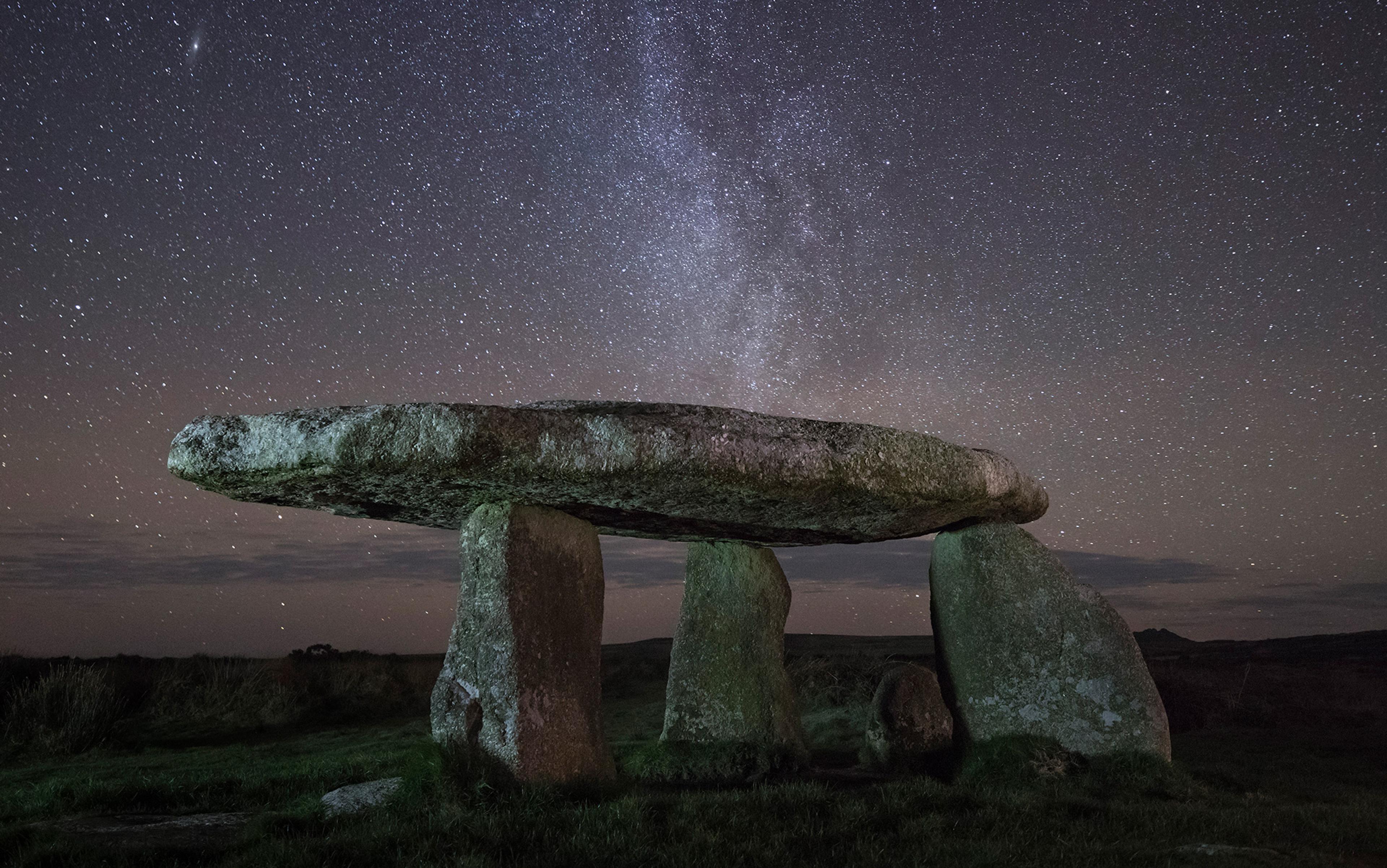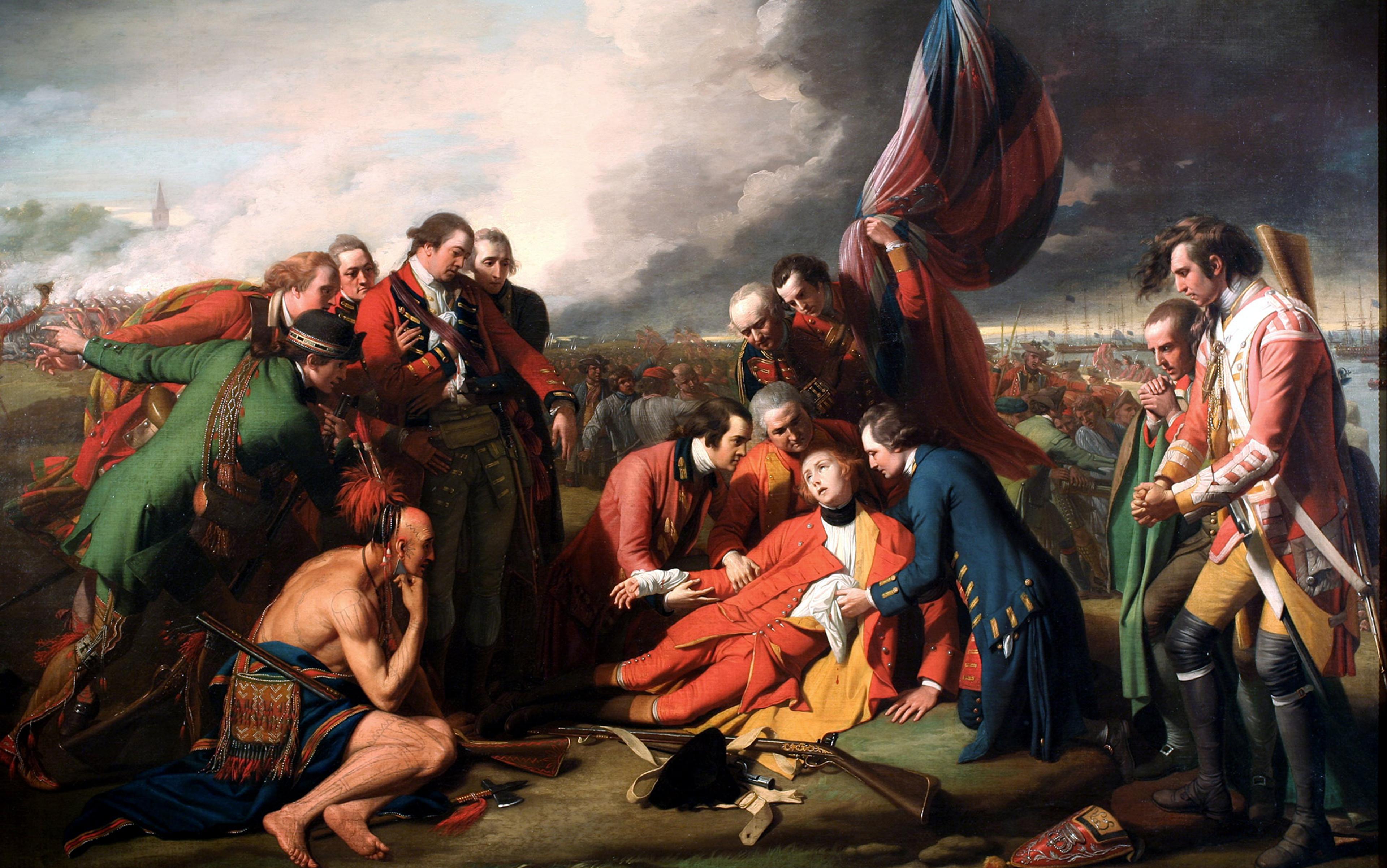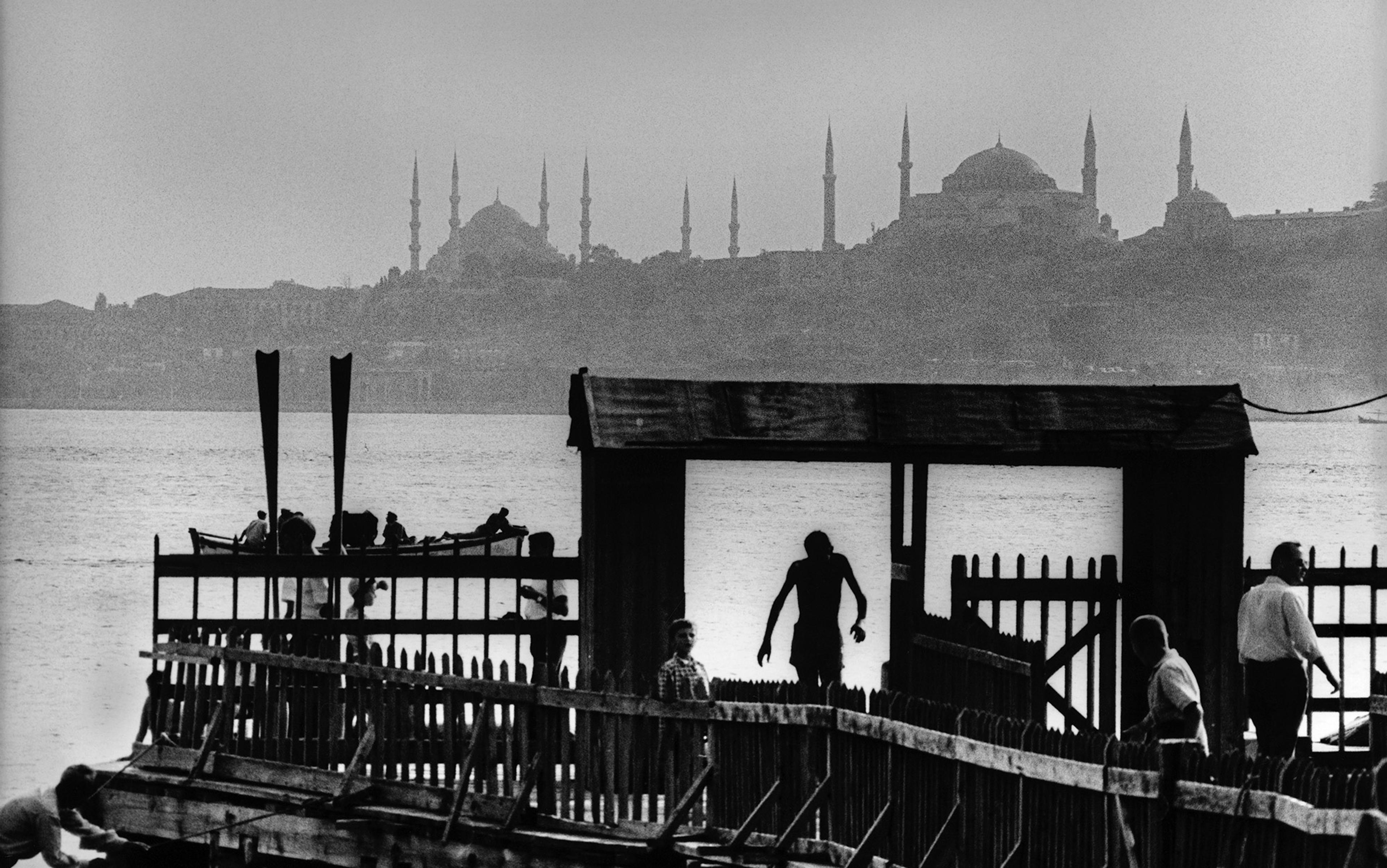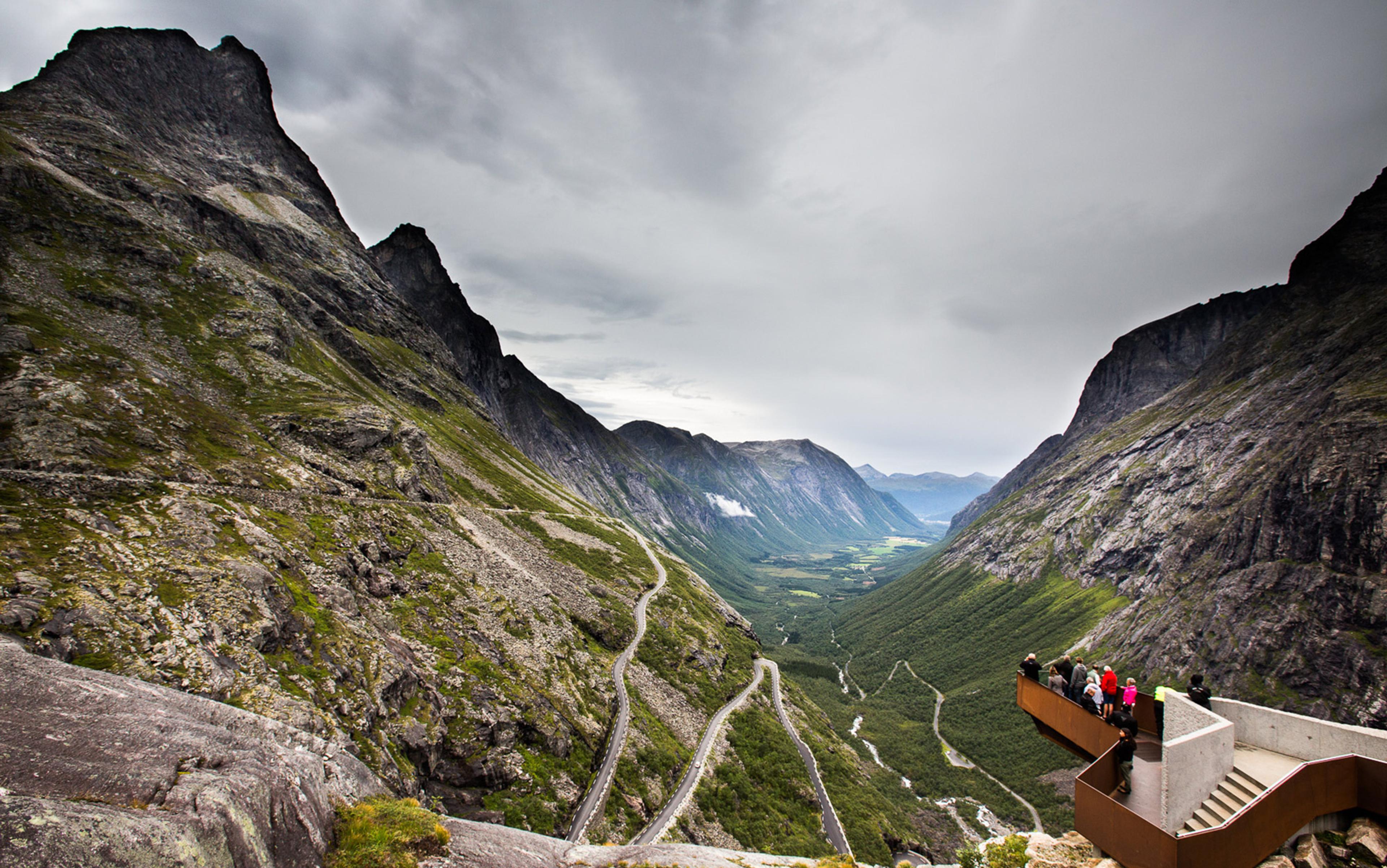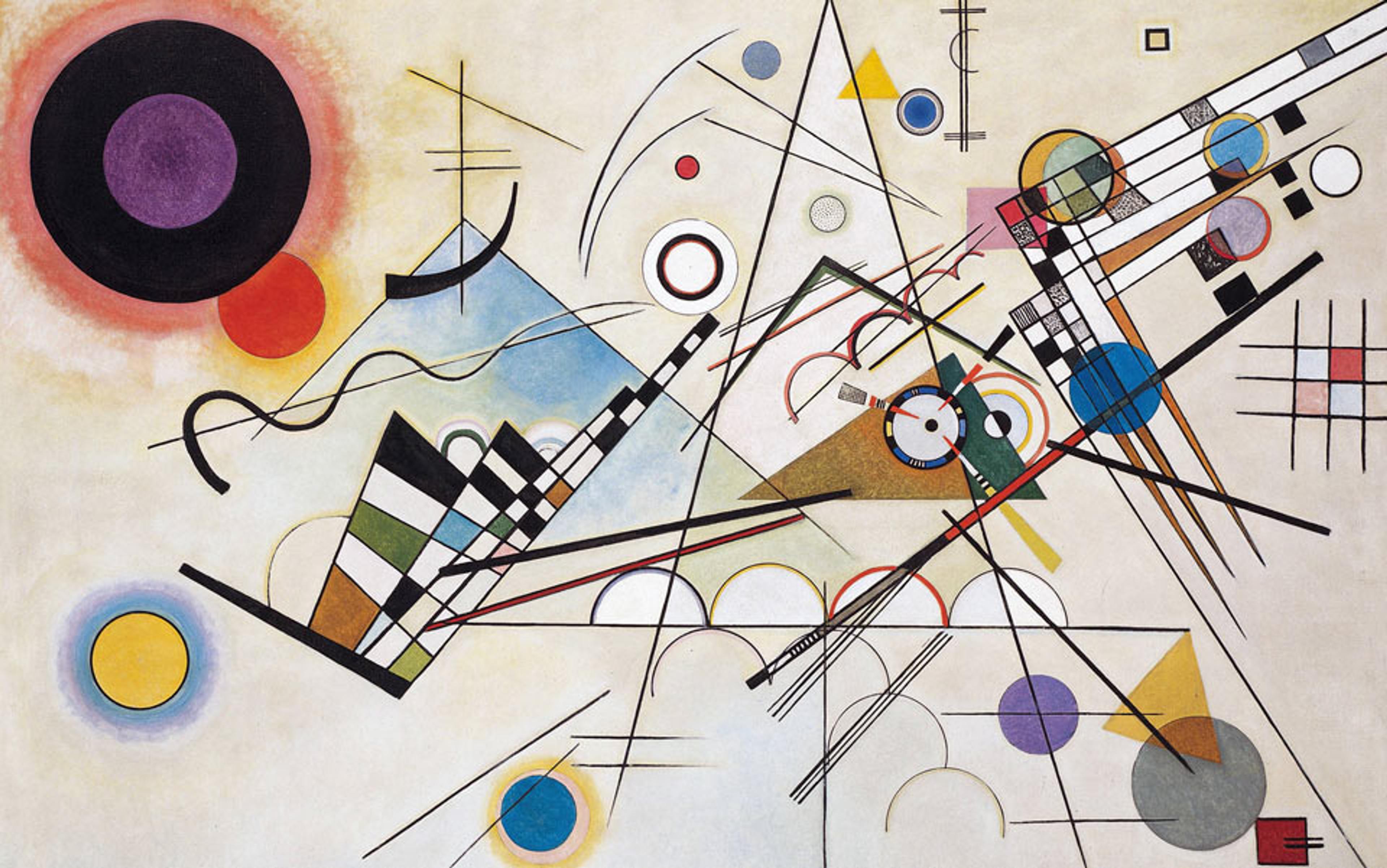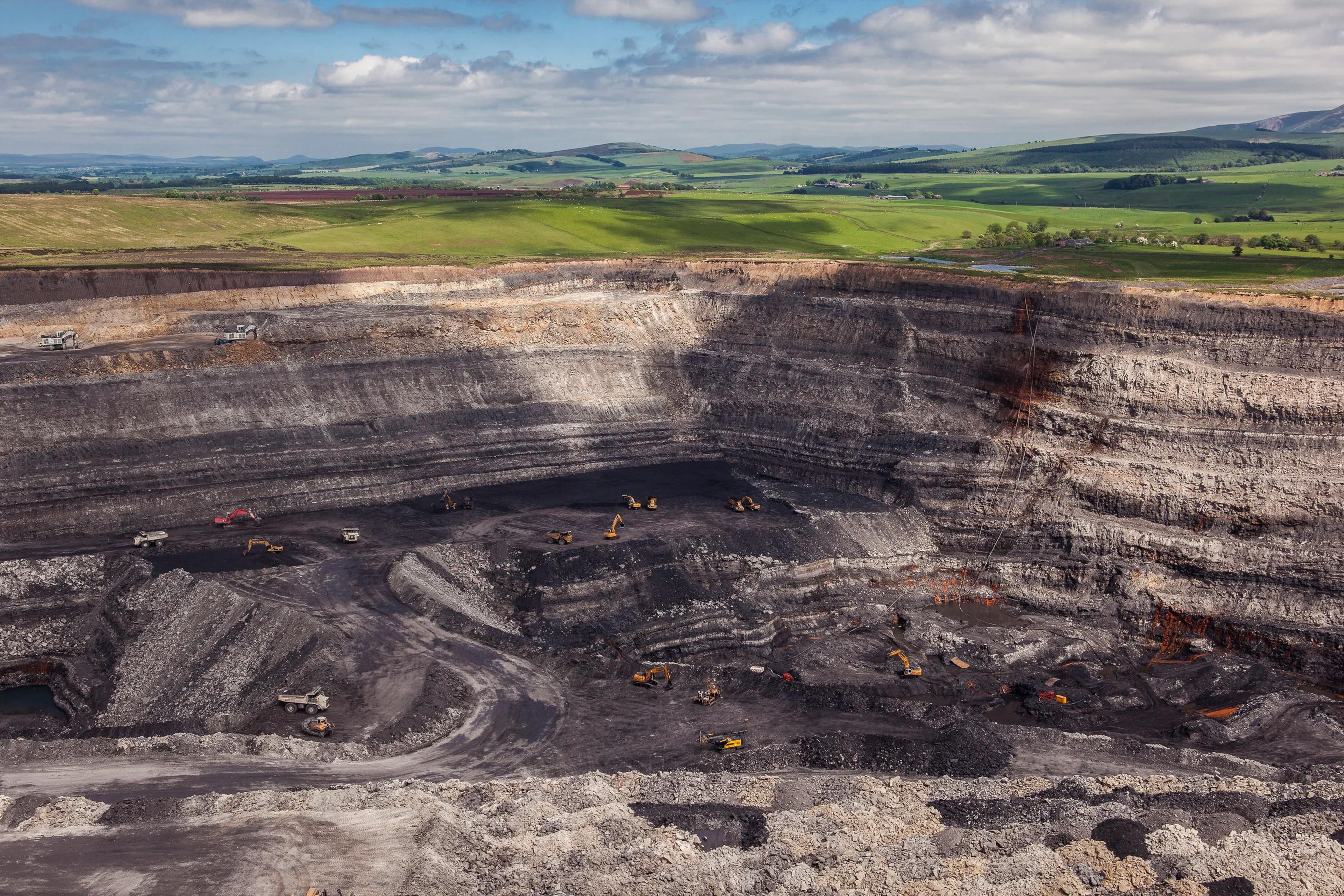Big History burst on to the scene 30 years ago, promising to reinvigorate a stale and overspecialised academic discipline by situating the human past within a holistic account at a cosmic scale. The goal was to produce a story of life that could be discerned by synthesising cosmology, geology, evolutionary biology, archaeology and anthropology. This universal story, in turn, would provide students with a basic framework for their subsequent studies – and for life itself. Big History also promised to fill the existential void left by the ostensible erosion of religious beliefs. Three decades later, it’s time to take a look at how Big History has fared.
David Christian first made the case for what he called ‘Big History’ in an article in the Journal of World History in 1991. He based it on an interdisciplinary course that he had been teaching at Macquarie University in Sydney that brought together faculty members from the sciences and the humanities. The idea for the course was to situate human history within a grand historical narrative that stretched backwards in time to the origins of the cosmos in the Big Bang and forwards to include the present and future development of the human species. The course promised to transform the way students were taught history by focusing on the big picture and what united all humans rather than what divided them.
At the time, Christian was reacting to a trend in academic life towards increasing specialisation. This trend played a role in further dividing the ‘two cultures’ of knowledge represented by the arts and sciences, but also led to divisions within those two cultures as well. Christian’s discipline of history, for instance, had grown fragmented into geographic and temporal specialisations, while narrow studies of archival sources were preferred to large-scale narratives that were more common earlier in the century. At a time when, in Jean-François Lyotard’s memorable phrase from 1979, an ‘incredulity towards metanarratives’ represented the era’s postmodern condition, Christian headed in the opposite direction.
Christian not only argued that historians should broaden their narratives beyond their narrow specialisations, he also questioned the necessity of focusing solely on the era of history documented by written records. Here he challenged one of the foundational premises of modern historical analysis. Once we accept that history should extend beyond the era of written sources, it opened the possibility to go much further. As Christian explained in his 1991 article:
We cannot fully understand the past few millennia without understanding the far longer period of time in which all members of our own species lived as gatherers and hunters … Palaeolithic society, in its turn, cannot be fully understood without some idea of the evolution of our own species over several million years … Such arguments may seem to lead us to an endless regress, but it is now clear that they do not. According to modern Big Bang cosmology, the Universe itself has a history … We can say nothing of what happened before this time; indeed time itself was created in the Big Bang. So this time scale is different from others … If the past can be studied whole, this is the scale within which to do it.
Three decades later, much of Christian’s vision has been fulfilled. Big History has become well established. It is now entrenched in Australia where it is taught at several universities, and there’s a Big History Institute at Macquarie. It is taught at universities around the world such as at Newcastle University in the UK, Dominican University in California, and the University of Amsterdam, to name just a few. There is an International Big History Association (IBHA) that was founded in 2010, which has organised five conferences since then. And in 2017, the IBHA launched the Journal of Big History, now published three times per year. Several monographs and textbooks have also appeared since the mid-1990s, notably Christian’s book Maps of Time: An Introduction to Big History (2004) and Fred Spier’s book Big History and the Future of Humanity (2010).
Big History was in fact at the forefront of a broader shift to large-scale, scientific history. A very different attempt to establish large-scale history on a scientific footing was proposed by Peter Turchin, the Russian American evolutionary anthropologist. In Historical Dynamics (2003), Turchin sought to apply the kind of mathematical modelling associated with evolutionary biology to social processes, such as the rise and fall of complex societies. Closer to the Big History formula is the recent work of the medieval historian-turned-public intellectual Yuval Noah Harari. His bestseller Sapiens: A Brief History of Humankind (2011) reconstructs the story of humanity, beginning with the Big Bang and ending with a lament about how humans have become God-like. A subsequent bestselling work, Homo Deus: A Brief History of Tomorrow (2015), speculated about what the future holds, based on the scientific story of life that was presented in Sapiens. The popularity of Harari’s works indicates that there is a public appetite for the large-scale, scientific approach to history.
The popular appeal of the basic premise of Big History is also evident in Christian’s recent book, Origin Story: A Big History of Everything (2018), another New York Times bestseller. Christian’s TED Talk, which summarises the Big History narrative in a mere 18 minutes, has been viewed well over 12 million times since 2011. Big History has garnered much high-profile attention, attracting the interest of Bill Gates, who initially came across Christian’s Big History course, available online through the Teaching Company’s Great Courses, and recognised its educational potential.
Gates has for many years been trying to reform the education system in the United States, largely by advocating for the Common Core, a set of new standards for mathematics and reading skills that the Gates Foundation funded and then lobbied to be adopted by most states. Big History appealed to Gates’s agenda. He thinks it provides just the kind of holistic programme of knowledge that he believed was missing from high-school education. The result was the Big History Project, an online course that provides free resources for those wanting to teach Big History at the middle- and high-school levels across the US. The project says that there are more than 1,000 teachers committed to teaching the curriculum. Big History, it would seem, is very much here to stay.
What accounts for Big History’s attraction for popular audiences and educators? For Christian and other big historians, the answer is built right in to the premise of writing Big History in the first place. By producing an overarching story of life, Big History is meant to fill the void that was left by the processes of secularisation that have dismantled the holistic narratives that were provided by traditional religious systems. According to Christian, secularisation has left people feeling fragmented and searching for some sort of grander vision and meaning of life that they can no longer find in religion. In supporting this view, Christian often refers to the French sociologist Émile Durkheim, who in 1893 argued that modern life has engendered a state of ‘anomie’, meaning that most individuals find themselves disoriented and uprooted from a deep sense of social belonging. Big History should, therefore, be understood as providing the kind of holistic meaning that used to come from religion. In this way, it is a ‘modern creation myth’ or an ‘origin story’, but one based on science rather than ancient scripture.
The language of religious faith and conversion underpins Big History. As I’ve argued elsewhere, the authors of Big History present their ‘discoveries’ of Big History as clear moments of conversion, when they rather suddenly recognised that they could find the holistic meaning that was missing from their lives in the universal story of life. These personal experiences then get turned into invitations to readers, inviting them to a similar conversion. Christian suggests that Big History is like a myth, because it is meant to provide the kind of deep meaning that is typically associated with religion. But for myths and religion, such deep meaning is conferred only with reference to the transcendent, something that is missing from the Big History narrative. So how is it possible, then, for Big History to be a myth or an origin story without reference to a transcendent? The answer, somewhat oxymoronic, is that science itself provides the mythic meaning of Big History.
Big History proposes eight ‘threshold moments’, when profoundly new forms of complexity appear in the past
This notion of science having a mythopoeic function was popularised by the myrmecologist E O Wilson, who, since the 1970s, has advocated for the creation of a grand narrative that would link the evolutionary processes of life with that of human origins and development. His book On Human Nature (1978) argued for the necessity of blending biology with the social sciences to produce a scientific narrative offering the same kind of ‘driving purpose’ for modern life that traditional myths provided for ancient tribes. Wilson hoped such a narrative, also clear in much of his subsequent work, from The Diversity of Life (1992) to The Meaning of Human Existence (2014), would convince humans to recognise their connection to all things, and therefore their duty to preserve the biosphere. From this perspective, Big History is a version of Wilson’s mythopoeic narrative, one whose authority derives from the science that provides the factual basis for the narrative and, ultimately, the meaning of life.
The Big History narrative itself is given shape by the interplay between the forces of entropy and complexity that are represented, respectively, by the second law of thermodynamics and evolution. The second law of thermodynamics postulates that there is a finite amount of energy in the Universe that is slowly dissipating, but evolution shows that there are moments when a particular threshold is reached and overcomes entropy by the creation of new forms of complexity. Big History proposes there are eight ‘threshold moments’, when profoundly new forms of complexity appear in the past: (1) the Big Bang; (2) stars and galaxies; (3) new chemical elements; (4) the Earth and solar system; (5) life on Earth; (6) the human species; (7) agriculture; and, our currently proposed geological epoch, (8) the Anthropocene.
These eight threshold moments structure the Big History narrative. What makes these threshold moments scientific, apparently, is that they are all derived from recent advances in relevant areas of science. Second, thanks to the discovery of advanced chronometric techniques such as radiocarbon and genetic dating, it is possible to assign fairly specific dates to these thresholds and establish an accurate and continuous timeline. Each new threshold is not completely disconnected from the previous, however, in the sense that the competing forces of entropy and complexity remain active, represented by the notion of ‘energy flows’. Energy flows are a process that connects all things, from the cosmic dust in space to the worms in the ground. This is the specialised architecture and language of Big History. There is also a fair amount of speculation.
Indeed, if we look more closely at Christian’s Origin Story, we find a decidedly formalised and specialised discourse embedded in a great deal of guesswork. This is because, for all that we appear to know about the deep past based on scientific advancements, there is still much that is unknown and much that is likely unknowable, particularly with regard to the threshold moments themselves.
That we may know less about these threshold moments than Big History acknowledges is evident in the explanation for how they come about. They arise, according to Christian, because of the right combination of ‘Goldilocks conditions’, environmental circumstances that come together in just the right sort of way to make sudden new forms of complexity possible. Threshold 2, for instance, which refers to the emergence of stars and galaxies, happened because of the Goldilocks conditions established by a combination of gravity and matter. Each threshold, moreover, takes place when a similar combination of environmental circumstances gives rise to a sudden evolution of complexity, and this is the case whether the threshold is cosmic, geological, biological or historical in nature. This idea helps provide an apparent coherence and unity for Big History. The problem is it reduces the complexities of life, along with our knowledge of them, to a formula derived from a fairy tale.
The Big History approach is particularly unsatisfactory when it comes to humans. Because we are a product of nature and also capable of understanding and shaping nature’s processes, humans possess a dual aspect that does not easily fit into the Big History framework. The challenge is further complicated by the moralising dimension of Big History that requires the reader to accept a certain amount of responsibility in shaping the future story of life. Yet when humans enter the story in Threshold 6 as a unique species whose linguistic capabilities lead to what Christian calls ‘collective learning’ (the ability to share knowledge over space and time), humans are presented as largely passive vehicles for the incessant demands of energy flows.
This perspective continues into all the subsequent thresholds. Big History describes the shift from a hunter-gatherer way of life to one of intensive agriculture that is represented by Threshold 7 as the product of three Goldilocks conditions. These are ‘new technologies (and increasing understanding of environments generated through collective learning), increasing population pressure, and the warmer climates of the Holocene epoch’. So, what role did humans play in this shift? One wonders. Aside from the new technologies, it seems that developing large-scale farming was largely unavoidable due to an increase in population and warmer climate, a view that ignores findings that show that the transition to agrarian life involved a lengthy and often violent process that some resisted. In other words, a host of contingent factors led to and shaped the advent of agriculture, based on human relationships and power struggles, and they are far more complex than Big History’s deterministic formula suggests.
Humans are passive observers to the major developments of the period we are supposedly shaping
Because the scale of Big History is so large, some of the traditional subjects of historical analysis, such as wars, empires, trade and religion receive limited attention unless they directly intersect with the overarching themes of thresholds and energy flows. Threshold 8 or ‘The Anthropocene’, however, offers an example of how these subjects are handled when they are deemed relevant. The Anthropocene is perhaps the most successful or widely known popularisation from Big History, and it overlaps with the present and recent past. As is now well known, the Anthropocene is a proposed geological epoch that marks a new phase in Earth’s history that has been primarily shaped by human activity. It includes many of the fundamental events and trends of the past 200 years, from industrialisation and colonisation to the total wars of the 20th century and the rise of mass democracy.
However, in Christian’s Origin Story humans are never really presented as more than passive observers when it comes to the major developments of the period in history that we are supposedly shaping. Industrialisation, globalisation, colonisations and more all seem rote responses to the demand for new sources of energy flows and increasing complexity. ‘The very nature of society and government was transformed,’ Christian writes, ‘by the new energy flows and technologies of the Anthropocene.’ So even in the Anthropocene the humans are just following new energy flows and the development of technologies. This speaks to the difficulty of integrating a sense of human agency into the Big History narrative, a problem that becomes particularly important at the end of the story.
Every Big History ends with a discussion of the future. Each future can, within a certain range of possible outcomes, be predicted, based on the large-scale scientific narrative that has preceded it. In Origin Story, Christian is careful not to suggest that the future is predetermined but rather gives the outline of possible scenarios of which he has a clear preference. One possibility is that the human species will continue on its current trajectory of heating the planet and reducing biodiversity because of its reliance on fossil fuels and, in so doing, will alter the Goldilocks conditions that make human life viable in the first place. In the other, preferable future, humans will learn to recognise the trajectory that they are currently trending and make pragmatic decisions that will alter their dependency on the kind of energy flows that are destroying the biosphere. Christian is optimistic that humans will decide to embark on the latter quest for a more balanced existence in part, he says, because certain governments and recent international agreements have already stated these as goals. Christian is also optimistic because Big History itself provides us with the kind of large-scale knowledge that is necessary in order to confront such difficult problems. Christian admits, however, that not much action has actually resulted from any of this.
Moreover, the scientific consensus concerning climate change was established a long time ago now; what has been missing is the will to do anything about it at the political level. Importantly, politics is precisely the level at which Big History offers no help. When the struggle for democracy, for instance, is reduced to a byproduct of a particular regime of energy flows, it is difficult to see just what Big History offers with regard to the political fight for consequential climate policy. What it does offer is a change of perspective or worldview but with little understanding of how to go about wielding the necessary political mechanisms to bring about effectual change. From a historiographical perspective, this would require an analysis at the microlevel of social and cultural history, the very terrain that is shown to be of little consequence in the Big History narrative.
Thirty years on, it is becoming clear that the issues that confront Big History are not unlike that of earlier attempts to utilise the cultural authority of science to write a history of everything. We’ve already seen that Big History relies on the same mythopoeic rhetoric that was central to E O Wilson’s works of popular science that yearned to project the same sense of wonder and meaning on to science that has traditionally been found only in religious metanarratives. This desire has a deeper history, however, that stretches to the 16th century, and has produced genres of scientific history that resemble Big History. This includes sacred histories that sought to elaborate and narrativise the historical events of the Old Testament as well as universal histories that sought to uncover the overarching stages of human history from Providential and secular perspectives.
There are similarities with more recent forms of large-scale history as well, such as the positivist histories of the 19th century, which sought to explain the development of civilised society as the product of a progressive scientism, or the evolutionary epics of the 19th and 20th centuries, which sought to tell the story of life from an overarching evolutionary perspective. What these forms of history all share with Big History is the desire to synthesise contemporary science to tell a story of humanity and to reduce its development to a set of laws or stages leading to the present and future.
To be fair, Christian has even suggested that, in some ways, Big History represents a ‘return to universal history’. He also expresses sympathy with the work of H G Wells, whose The Outline of History (1920) sought to present a holistic account of world history for the same reason: to unite a fragmented world. What makes Big History fundamentally different from these previous iterations, according to Christian, is that it has the benefit of relying on modern science and can therefore provide a more accurate account of large-scale events such as the Big Bang and the emergence of life. But important questions present themselves: first, are we actually much, if any, closer than Wells’s generation to understanding the meaning of these events? Second, how much does the scientific knowledge we have gained since then really tell us about the development of human society and culture?
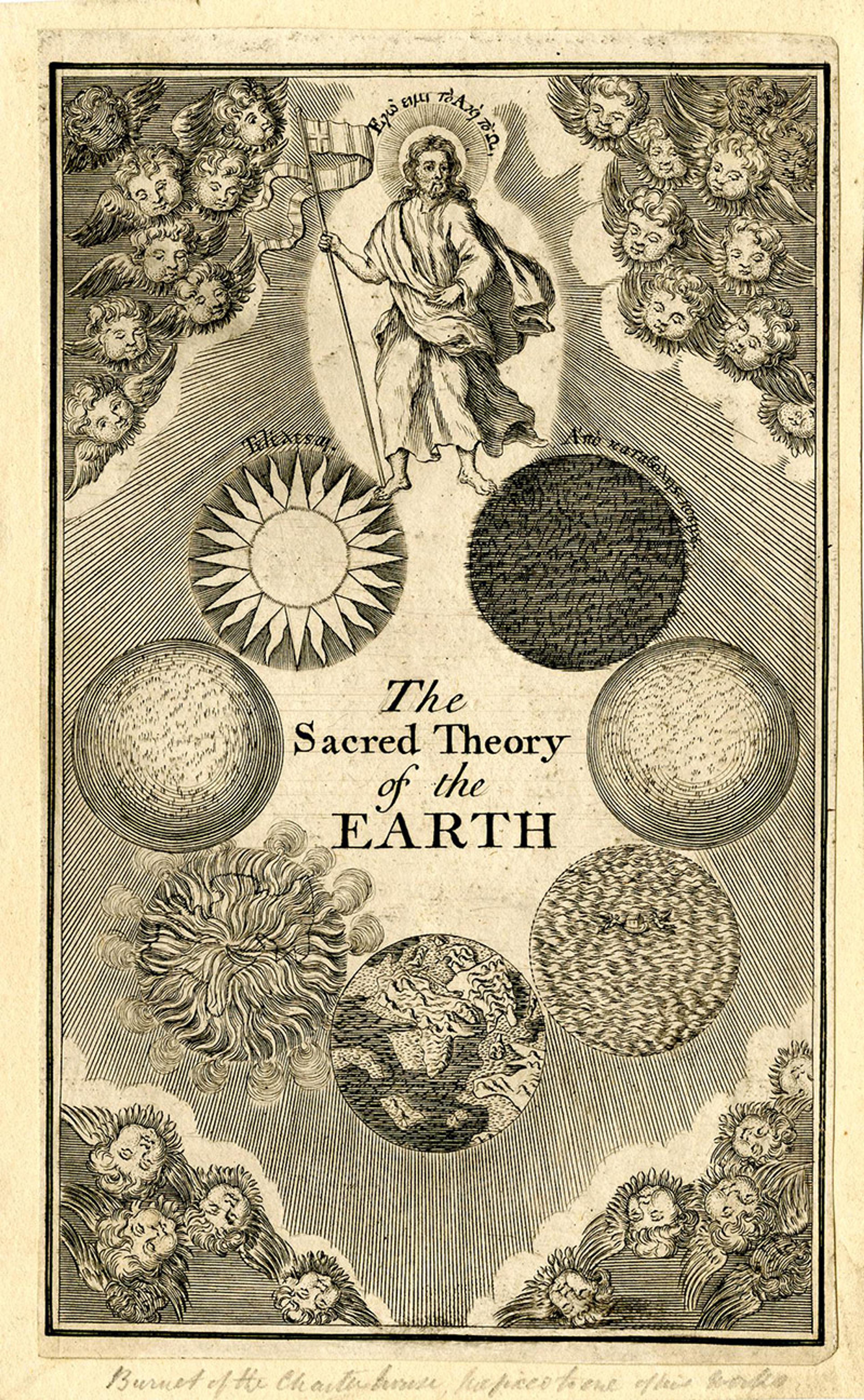
Illustration to Thomas Burnet’s Sacred Theory of the Earth (c1786). Courtesy the British Museum
One way to think about these questions is to consider the compelling similarities between Big History and the sacred history written by the 17th-century English theologian Thomas Burnet. Burnet’s history was based on the contemporary science of Copernican cosmology and Cartesian physics. His Sacred Theory of the Earth (1680s) showed that Earth went through a series of seven stages, as clearly illustrated by the book’s frontispiece. While these stages conformed to the central events of the Bible such as the Creation, the Deluge and the Last Judgment, Burnet argued that natural law determined these events. They were not miracles. Like Christian’s Big History, Burnet’s The Sacred Theory of the Earth sought to provide a holistic account of the most important historical events but explained by contemporary science. Again, like Big History, the key to understanding the stages of Earth’s history for Burnet was getting the science right.
Big History privileges the cosmic at the expense of the human, the natural at the expense of the political
This was equally important to the universal histories of the 18th and 19th centuries that replaced the epochs of the Bible with the stages of civilisational development. Henry Thomas Buckle’s sensational History of Civilization in England (1857) argued that scientific laws that he discerned via an analysis of statistical regularities guided human history and intellectual development. It was England, according to Buckle, that provided the historical model of civilisational progress that other nations would have to follow to achieve a free and prosperous society. Progressing further than that, however, would require an understanding of the scientific laws of development that led to that progress in the first place, an understanding conveniently provided by the very existence of Buckle’s book. Buckle’s work is often presented as a product of 19th-century positivism, and it is embedded in Eurocentric conceptions of history and progress. But it shares with Big History a desire and belief that history in its totality can be understood with reference to a few scientific principles and a handful of key events.
Buckle’s and other positivist-inspired works, however, were soon antiquated by new grand narratives of life that relied on the emerging science of evolution. These focused not on civilisation but race, and imagined the global dominance of the Anglo-Saxon as a product of a lengthy struggle for existence that began deep in the past. The anthropologist and travel writer William Winwood Reade, for instance, applied Darwinian evolution to a history of humanity that originated with the origins of the Universe in a nebular fire mist. Reade’s The Martyrdom of Man (1872) then proceeded through a series of progressive stages that were determined by a combination of struggle and overarching directional development. Much like Buckle’s work, Reade’s Martyrdom of Man was meant to inspire its readers to bring about future progress that he imagined would eventually lead to such transformative measures as passenger air travel and laboratory-produced meat. Over the years, Martyrdom of Man grew in popularity as it was eventually translated into Dutch, and by 1912 had reached 20 editions. It also notably inspired Wells to write his own evolutionary epic that became the Outline of History.
The point in rehearsing this history is not simply to show that Big History has predecessors. It is to identify and place it within a specific tradition of large-scale history-writing that also includes sacred and universal histories, positivist histories and evolutionary epics. While it may be true that Big History’s success rests upon some deep human need for origin stories, it is important to recognise that Big History is not just like other origin stories. It is just like a specific tradition of origin story that has roots in Judeo-Christian conceptions of history and seeks to rely on the authority of science to justify its historical claims. The sciences may change along with the particular facts that are brought in to support them, but the overall form of the story remains the same.
With that said, thanks in part to Big History, large-scale accounts of the past have moved from the periphery to the centre of historical thinking and writing. What Big History has done well is challenge the long-held assumption that has limited the discipline of history to the era of written records. As it is clear that we live at a moment when, as Dipesh Chakrabarty has argued, the previously relatively separate processes of human and geological timescales are now colliding, so we need new ways to think historically in order to grasp what is happening and how to respond. Big History provides one possible answer to this problem by producing a holistic, singular and universal story that seeks ultimate knowledge in the overarching laws of science.
But, much like the Judeo-Christian conception of history from which it derives, Big History reduces the vicissitudes of human history to processes that are ultimately beyond human control. What this means is that Big History necessarily privileges the cosmic at the expense of the human, the natural at the expense of the political. This is, unfortunately, a necessity that follows from Big History’s goal of uniting the human species under the framework of a story that is supposedly for everyone. It may make for a popular just-so story that appeals to billionaires looking to empty history of politics and divisions, but it offers little for those hoping to understand how we go about thinking through the problems and possibilities of writing history in the age of the Anthropocene.
